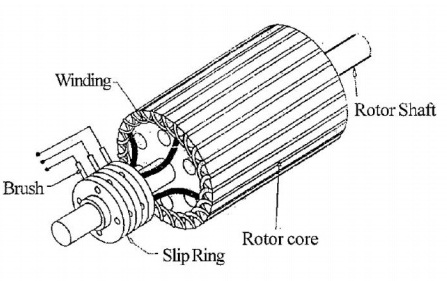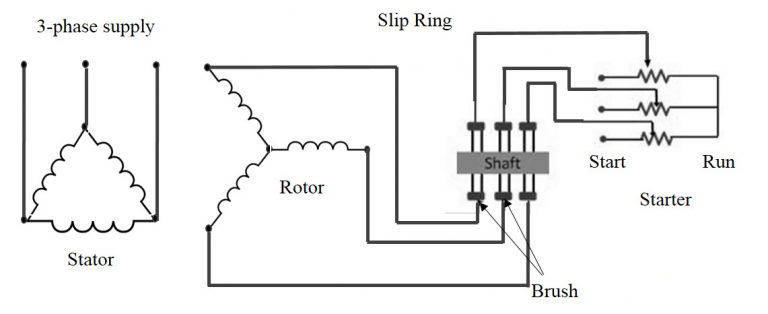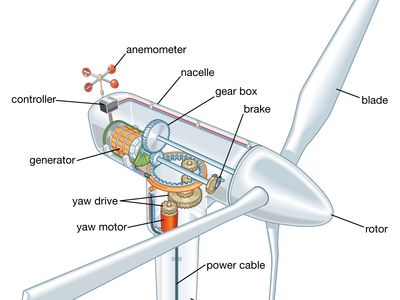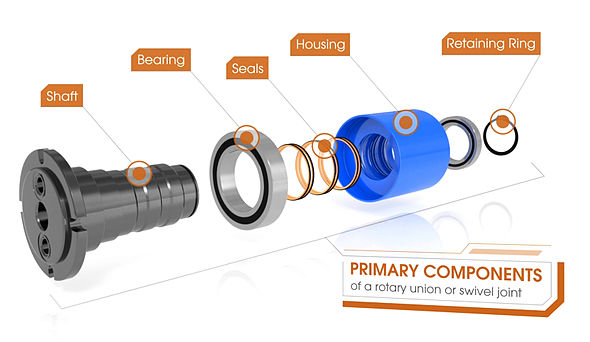This new guide will show you everything you need to know about slip ring induction motors.
First, I’ll show you what is slip ring induction motor.
Then, I’ll help you know about slip ring induction motor working principle.
Sound good? Let’s dive right in…
What are Slip Ring Induction Motors

Construction of a Slip Ring Induction Motor
Firstly, let’s begin with the stator. As the name suggests the stator is the part of the induction motor that always remains stationary. A stator winding is positioned within the stator of the induction motor, afterward, a three-phase supply is then given to it.
Next comes the rotor, this is the part of the motor which is designed to have the ability to rotate. The rotor is attached to the automated load via the shaft. With a slip ring induction motor, the rotor is called a wound rotor motor due to it being wound with three-phase windings.
The main reason we decide to use three-phase windings as numerous rotor turns boosts secondary voltage in the circuit as well as largely diminishing the overall amount of current flowing through the slip rings. This prevents the motor from burning out like with other induction motors. Typically, wires are used for a winding however other things such as straps and bars can also be opted for.
A slip ring is a ring in a dynamo or electric motor which is attached to and rotates with the shaft, in turn passing an electric current to a circuit through a brush that is fixed to the shaft and is pressing against it. Slip rings are used in motors as a way of adding resistance to the rotor windings as adjusting the resistance allows the complete control of speed/torque characteristic of the individual motor.
Usually, a slip ring will consist of a graphite brush or something with similar properties to carry the current and signals. The brush gently rubs on the outside perimeter of a turning metal ring. As the ring rotates the current/signal is then transferred through the graphite or metallic brush and into the metal ring which in turn makes the connection.
The opening current of any slip ring induction motor is greatly reduced with the inclusion of extraneous resistance within the circuit of the rotor. In the beginning, the rotor of the motor has hold sway inaugural resistance. However, with the inclusion of resistance within the rotor it becomes far less inductive. The result of this means that the overall power of the motor is greatly improved.
The speed of slip ring induction motors (wound rotor motors) can largely be controlled now, the main way in which this is controlled is by inhibiting the current to the rotor, in turn ensuring safe practice to run even a motor with a very high slip ratio. By introducing any level of resistance into the circuit the rotor current is reduced to safe levels even with very high slip ratios, which can often above 50%.
All slip rings are conjoined with a common factor, variable resistance. When adding external resistance to the rotor winding the opening current is usually very low, however, it does have a very high level of starting torque which is necessary for making them fit their desired purpose in a lift or hoist for example. When the operational speed of the motor in question reaches its desired level to operate effectively the subsequent rotor winding is disconnected by default and all external resistance is removed. We only need to use the external resistance for starting the motor, after this it becomes obsolete so is removed.
Slip rings are normally used for transferring power or signals from a stationary to a rotating structure however in a wound rotor motor a slip ring is used for adding resistance into the windings of the rotor, this is done help control the speed of the motor and ensure safe practice.
How a Slip Ring Induction Motor works

The way in which a slip ring motor works is largely the same as all other induction motors. A rotating electromagnetic field which is created when the poles of the stator are arranged in a specific way and connected to an A.C supply which is linked to the motor. The exchange of different electromagnetic fields, in turn, causes the rotor to pursue the everchanging fields of the stator. Then the stator of the Slip Ring Induction Motor is equivalent to an induction motor.
The rotor of the induction motor is thoroughly contrasting when compared to a squirrel cage rotor, the rotor has three phase star winding and each individual phase winding is affixed to a slip ring. The reason to attach the coils via slip rings is so that variable resistance can be added to the circuit which allows for the current to be controlled easily which in turn allows for total control of the variable motor output.
Consequently, this reduction helps the motor to generate high stating torque. The slip ring induction motor diagram is shown left.
How to check the resistance of a Slip Ring Induction Motor
Advantages and Disadvantages of a Slip Ring Induction Motor
There is a reason why slip ring induction motors have become so popular in recent years, they offer many benefits when compared to other induction motors.
With a slip ring induction motor, there is no chance of any abnormal overheating upon start-up which prevents any damage being caused. This type of induction motor has the ability to accelerate very smoothly even with a heavy load, they also have a very high capacity to prevent overloading which is hugely beneficial compared to other induction motors.
When opting to use a slip ring induction motor the operational speed can be easily adjusted to best suit your individual needs and circumstances, this is why they can also be called variable speed motors. Upon acceleration, levels of starting torque are unmistakably high compared to other induction motors coupled with a drastically low current. When external resistance is added into the equation maximum starting torque can be achieved.
Disadvantages
Although slip ring induction motors offer many advantages over other induction motors they do not come without their drawbacks which we will now discuss. One such disadvantage is that they are significantly less efficient than squirrel cage induction Motors are, these induction motors are also very highly sensitive to any change in the voltage supply no matter how minor, which can lead to them malfunctioning or needing a costly repair. It is vitally important that the voltage supply cannot surge or suddenly stop.
Slip ring motor application
A slip ring induction motor is perfect for use in a crane as it is able to withstand the heavy load of the crane, the crane is able to supply subsequent amounts of power so that operational speed of the Slip Ring Induction Motor can be easily controlled. Typically, a slip ring induction motor is required in situations where high starting torque and low starting current and are required, a perfect example of this would be in a crane.
Differences between Slip Ring Induction Motor and Squirrel Cage Induction Motor
The main differences between a squirrel cage induction motor and a slip ring induction motor are that the construction is very different, squirrel cage induction motors are basic to manufacture and require little in depth expertise whereas Slip ring induction motors are very complex and much more difficult to construct with a lot of extra care needed to be taken. With a slip ring induction motor the speed can easily be controlled too by adding external resistance to the rotor, this cannot be done with a squirrel cage induction motor. Also, it is worth noting that a much higher starting torque can be seen with a Slip Ring Motor too when comparing the two.
With a slip ring induction motor the cost originally is very high and so is maintenance costs when compared to a squirrel cage induction motor, this is due to the complexity of the motor and its parts, the winding on both the rotor and stator increases the price. A squirrel cage motor has a significantly lower maintenance cost. A Slip Ring Induction Motor is used in applications which need a high starting torque such as a lift or a hoist whereas squirrel cage induction motors are used for low torque applications such as a drill or a fan.
With a slip ring induction motor brushes are present and they are responsible for making the contact between the stationary and rotating structures, with a squirrel cage induction motor this is not the case as there are no brushes present. Slip ring Induction motors are not used all across the industry, in fact only around <10% of the industry uses this type of motor as opposed to a squirrel cage induction motor.
Conclusion
After reading this guide, we hope you now have a better understanding of how a slip ring induction motor works, their advantages and disadvantages and their applications.
With a slip ring induction motor we now have the ability to add external resistance to the circuit which in turn allows the user to control overall operational speed in a way which is not possible with other motors.
With a higher starting torque, there is going to be a low current and this goes a long way in eliminating any damage which can be caused with another induction motor as they are prone to burning out if the temperature does indeed get too high.
Although the construction of the slip ring induction motor is expensive and complex it is a viable option in some areas of the industry where a high starting torque is required, squirrel cage induction motors just do not have the high levels of starting torque needed for some applications, such as in a crane or in a lift.
Although the construction of the slip ring induction motor is expensive and complex it is a viable option in some areas of the industry where a high starting torque is required, squirrel cage induction motors just do not have the high levels of starting torque needed for some applications, such as in a crane or in a lift.
To get a better understanding of how a slip ring induction motor works, you can download slip ring induction motor.pdf


©2022 Orbinexus . All rights reserved Site Map
 Pay Online
Pay Online Get A
Quote
Get A
Quote

